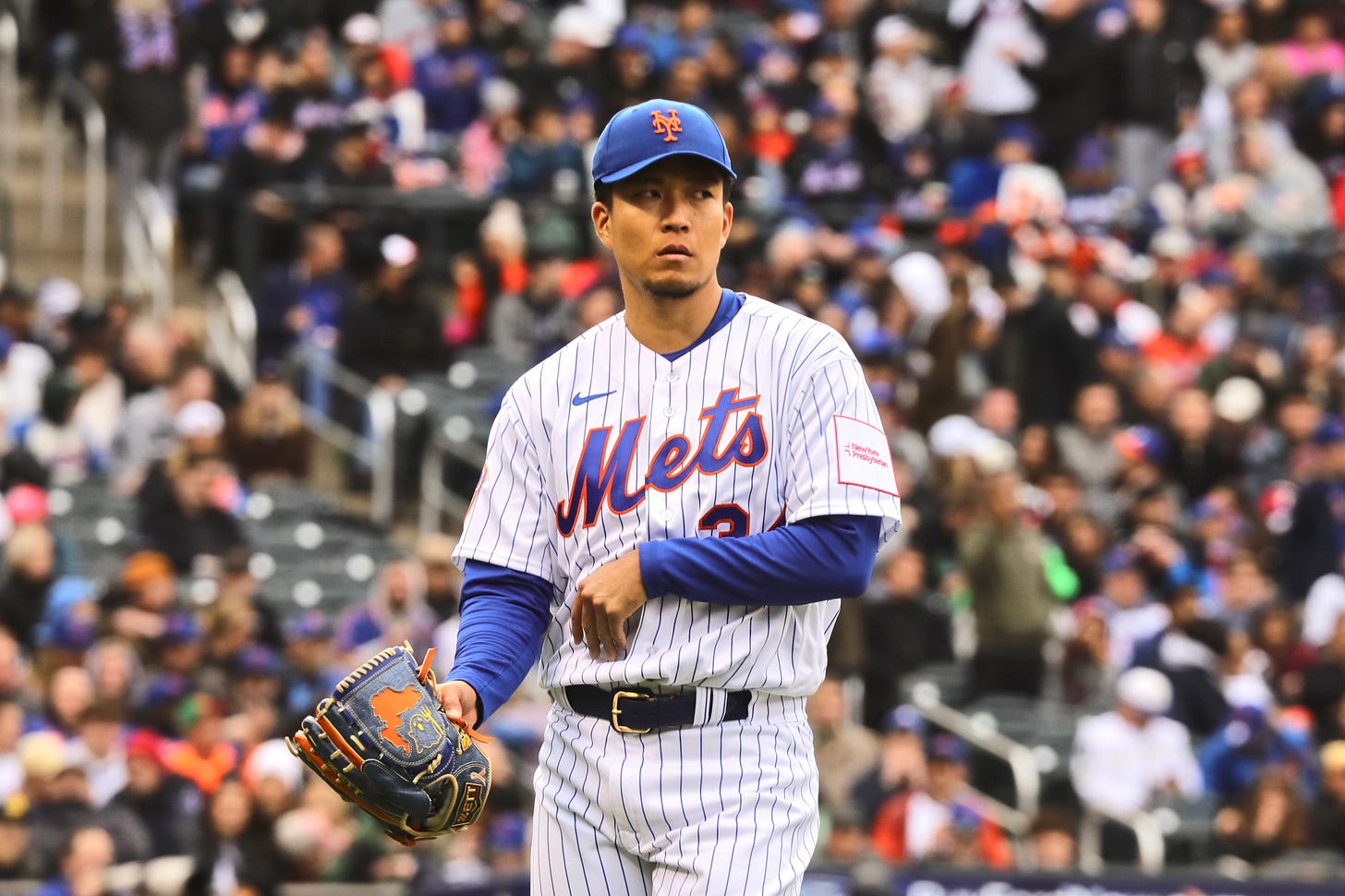Image credit: Roberto Carlo
When Kodai Senga signed with the Mets last offseason, he arrived in Flushing ready to settle in behind two future Hall of Fame rotation-mates, on a team with high expectations (and an even higher payroll), and begin forging a path for himself in some uniquely new surroundings.
Oh, how things can turn on a dime in this life…
An accomplished professional in his own right, the then-29-year-old was essentially starting anew, taking his talents from Fukuoka of the Japan Pacific League in Nippon Professional Baseball to the most celebrated league in the world, Major League Baseball. Senga was a neophyte once again, and doing so on the opposite side of the globe in a little town called New York City. Daunting stuff for anyone in any walk of life.
Learning a new league, on a new team, in a new country, while throwing a different baseball is presumably no walk in the ballpark. However, by the end of his first MLB season (despite the Mets’ follies), it became increasingly apparent that the Gamagōri, Aichi, Japan product (ever notice the silhouette above the Ghost Fork character on his glove? That’s Gamagōri!) had gotten quite comfortable in his adopted home.
Senga shined through his first two outings with the Mets, allowing just two earned runs over 11.1 innings with 14 strikeouts. The three walks he allowed in each of his first two starts barely registered a negative reaction, as most were mesmerized by the aforementioned Ghost Fork, a split-fingered offering that cruises along just as a fastball would for 50-odd feet then falls off an invisible table, darting off-and-downward like a changeup—magically dancing below bats, just as the specter-like moniker suggests.
Over his next five starts, Senga would struggle with consistency. A 5.26 ERA over that span would for some overshadow the brilliant repertoire and solid strikeout tally (29 over 25.2 IP), somehow neglecting to take into account the myriad of new challenges that Senga was simultaneously overcoming while trying to find a solid grip on his new settings.
Needless to say, that grip was found. In all its split-fingered, four-seamed, sliding, and sweeping splendor.
Image credit: Chris Simon
He’d walk 17 over his next five starts (May 17 to June 10), but the end product was beginning to resemble what every Mets-minded individual was hoping it would: a 2.28 ERA with 36 strikeouts and one home run allowed over 27.2 innings of work—aka ace-level stuff.
And he didn’t stop there. Senga didn’t allow a four-walk outing from that June 10 start (no runs, two hits, four walks over 7 IP at Pittsburgh) until September 8 and didn’t have a four-BB start after. Command is key. As we were about to see.
His pitching line from June 10 on? Oh, just a cool 2.58 ERA with 129 strikeouts and 41 walks over 108.2 innings pitched (10.68 K/9, 3.40 BB/9, 0.83 HR/9). Senga’s ERA over that span was fourth-best in baseball among qualified starting pitchers (HR/9 over that span t-9th with old pal Taijuan Walker).
After a natural spell of getting-to-know-ya, Kodai Senga found his stride and walked tall to the finish line. And friends, that gait sure appears to be magnificent. Sophomore slumps happen, but Senga’s strong finish to 2023 and newfound responsibilities may indicate he’s headed in another, more fruitful direction.
Heading into 2024, just as the Mets do overall, Kodai Senga has a bit of an altered objective compared to last season. Job No. 1 is still to win games and contribute all you can individually to said dubs. It is a team sport, after all. That aspect doesn’t change.
But with just under a week until pitchers and catchers report to Port St. Lucie, it appears Senga will be the ace of this staff, which is a hard right from the big-spending version of the Mets that Senga walked into last year.
Justin Verlander and Max Scherzer were jettisoned mid-season, an organizational leaf was turned, and despite calls from some fans this winter to replenish the rotation with big-time arms, the Mets went with depth, stacking Luis Severino, Sean Manaea, and Adrian Houser with Senga, Jose Quintana, plus fellow incumbents Tylor Megill, Joey Lucchesi, and potentially Jose Butto.
There are still more than a few options hanging out in free agency limbo, some of whom would fit the bill of top-half options in a depth-laden Metsies rotation. Blake Snell remains on the market, as does Jordan Montgomery, but the Mets appear to have no interest in either.
Unless things change drastically over the next six weeks or so, David Stearns, Carlos Mendoza, and the New York Mets decision-makers have Kodai Senga slotted atop the starting five (or six, however this shakes out) this season.
Good.




